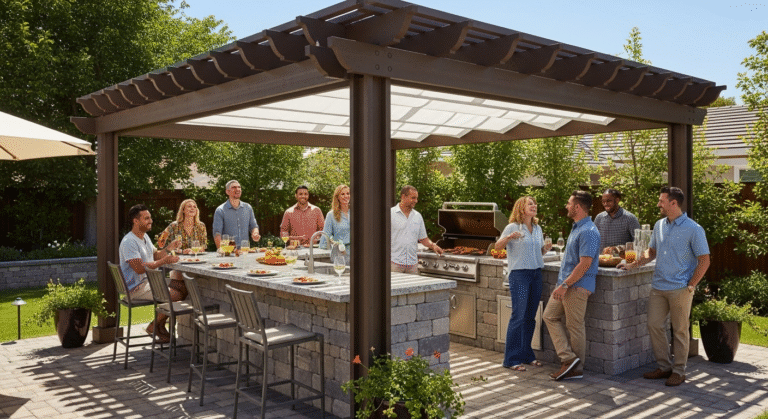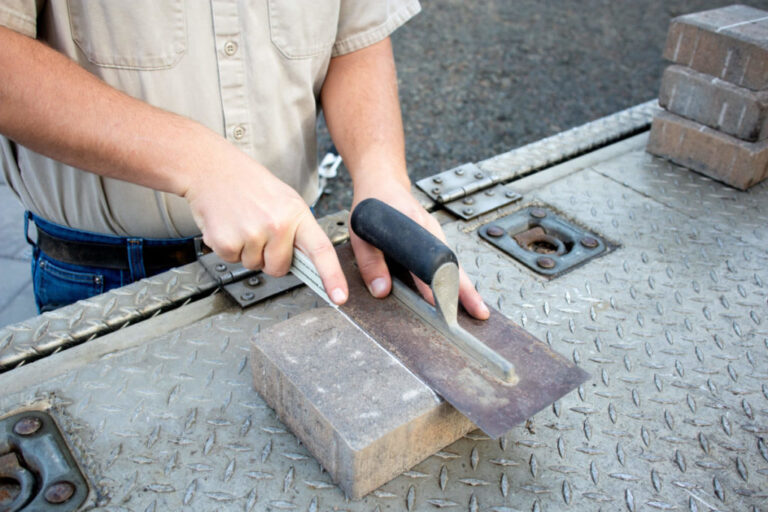Wood-Burning vs. Gas Fire Pits: Choosing the Best Fit for Your Outdoor Space

Choosing between wood-burning and gas fire pits can be a tough decision. For those who love a traditional feel and the crackling sound of logs, wood fire pits are perfect. They offer a nostalgic vibe and can be a more cost-effective option.
On the other hand, gas fire pits, whether propane or natural gas, provide convenience and cleaner burning. They are easy to start, require less maintenance, and eliminate the need for wood storage. Gas fire pits are ideal for those who prefer quick and hassle-free fires.
In short, if you want tradition and don’t mind some extra work, go for wood-burning. Opt for gas if you value convenience and cleaner burning. Keep reading to learn more details and make an informed decision.
Understanding Fire Pit Basics
When choosing between wood-burning and gas fire pits, it’s essential to understand different types of fire pits, fuel options, and safety regulations.
Types of Fire Pits
Fire pits come in various types, each with its advantages and drawbacks. Wood-burning fire pits are traditional and offer a rustic experience with the crackling of wood. They require more maintenance, including regular cleaning of ashes.
Gas fire pits provide convenience and instant heat, using propane or natural gas. They are cleaner and easier to start but depend on a fuel source, which might limit their portability. Tabletop fire pits are smaller and often portable, suitable for patios with limited space.
Fuel Options and Requirements
Wood fire pits burn logs, providing a natural aroma and ambiance. They require dry, well-seasoned wood for efficient burning. Gas fire pits use propane or natural gas, offering consistent flames. Gas is easier to control for a steady heat output. Propane tanks need regular refills, while natural gas lines offer a continuous supply but might need installation.
Choosing the right fuel depends on availability, convenience, and desired user experience. Ensure the fuel type you choose is readily available and suitable for the fire pit design.
Safety and Regulations
Safety is crucial when using a fire pit. Wood-burning fire pits should be placed a safe distance from structures and trees due to flying sparks. Always have a fire extinguisher or water source nearby.
Gas fire pits are generally safer but still require precautions. Regularly check connections for leaks and follow manufacturer guidelines. It’s essential to understand local regulations and restrictions regarding fire pit use.
Some areas have strict rules on open flames and require permits. Other locations might ban wood-burning fire pits due to fire risk or air quality concerns. Always check and comply with local laws and safety codes to avoid fines and ensure safe usage.
Design and Aesthetic Considerations
Choosing between wood-burning and gas fire pits involves considering materials, placement, and style. Each choice enhances your outdoor space uniquely, creating different looks and ambiances.
Material Choices
For a wood-burning fire pit, common materials include stone, brick, and steel. Stone and brick offer a rustic and natural look. They blend well with various landscaping designs, adding a timeless ambiance. Steel, on the other hand, provides a more modern and sleek appearance, although it can become hot to touch during use.
Gas fire pits typically use concrete, stainless steel, or special heat-resistant materials. Concrete can be molded into various shapes and sizes, allowing for creative designs. Stainless steel is durable and gives a clean, polished finish that fits well with contemporary outdoor spaces.
Fire Pit Placement
When deciding on placement, keep safety and accessibility in mind. Wood-burning fire pits should be located away from any flammable materials, structures, or low-hanging branches due to the potential for sparks and embers. They often work well in more open areas of the yard.
Gas fire pits offer more flexibility in placement since they do not produce smoke or flying embers. This means they can be placed closer to your home or underneath covered areas, given adequate ventilation. They also pair well with seating arrangements, making them ideal for entertaining.
Style and Design
Wood-burning fire pits come in various designs, from simple circle pits made of stones to more elaborate brick constructions. These designs can create a cozy, campfire-like atmosphere, perfect for roasting marshmallows and storytelling.
Gas fire pits often come in more intricate designs, including tabletop models, which offer both functionality and style. These options can serve as a focal point in your outdoor space, providing warmth and a unique visual element. For a customized look, professional fire pit paver installation can enhance outdoor ambiance and elevate the overall design.
Choosing the right design and style depends on your preferences and the existing aesthetics of your outdoor area. Each type offers unique advantages that can transform your backyard into an inviting retreat.
Practical Aspects of Fire Pit Ownership
When choosing between wood-burning and gas fire pits, it’s important to consider the practical aspects such as installation, upkeep, operation, maintenance, costs, and budgeting.
Installation and Upkeep
Wood-Burning Fire Pits: Installing a wood-burning fire pit can be simpler. It often involves creating a safe, open area, which might include a ring of stones or a metal bowl. It’s important to consider wood storage space for logs. Upkeep includes regular cleaning of ash and soot to maintain safety.
Gas Fire Pits: Installation of gas fire pits may be more complex. They might need a gas line connection or a propane tank. This often requires professional setup, leading to higher installation costs. Upkeep is generally easier since there’s no need to store wood or clean up ash.
Operation and Maintenance
Wood-Burning Fire Pits: Operating a wood-burning fire pit involves lighting logs, which can be satisfying for some but challenging to start. It’s essential to keep wood storage dry. Maintenance includes regular cleaning to prevent soot buildup and periodic safety checks to ensure no damage to the structure.
Gas Fire Pits: Gas fire pits are easier to use. They often have ignition systems, allowing quick, fuss-free operation. Maintenance involves checking gas lines and connections for leaks. Cleaning is minimal, usually just wiping surfaces and ensuring burners are free of debris.
Costs and Budgeting
Wood-Burning Fire Pits: Initial costs for wood-burning fire pits are usually lower. Prices range from simple models under $100 to more elaborate setups costing several hundred dollars. Ongoing costs include purchasing firewood and occasional repairs, but these are usually quite manageable.
| Item | Cost Range |
|---|---|
| Initial Setup | $50 – $500 |
| Firewood (monthly) | $20 – $50 |
Gas Fire Pits: They tend to have higher installation costs due to the need for a gas line or propane tank. The price can range from a few hundred to several thousand dollars. Ongoing costs include propane refills or gas bills, which can add up over time.
| Item | Cost Range |
|---|---|
| Initial Setup | $300 – $3,000+ |
| Propane (per refill) | $15 – $30 |
Environmental and Health Implications
Choosing between wood-burning and gas fire pits involves considering the effects on the environment and human health. Factors like emissions, air quality, and sustainable practices play essential roles in making an informed decision.
Emissions and Air Quality
Wood-burning fire pits emit smoke, which contains various pollutants including particulate matter and creosote. These can affect air quality and pose health risks, especially for people with respiratory conditions. Burning wood also releases carbon dioxide and other greenhouse gases.
Gas fire pits, on the other hand, produce fewer emissions. They burn cleaner, releasing less particulate matter and no creosote. While they do emit carbon dioxide, the levels are generally lower compared to wood-burning options. This makes gas fire pits a more environmentally-friendly choice in terms of air quality.
Sustainable Practices
When it comes to sustainability, sourcing and using wood can have an environmental impact. Harvesting wood for fuel can lead to deforestation and habitat destruction. Additionally, wood-burning fire pits generate ash, which requires responsible disposal to prevent soil contamination.
Gas fire pits use propane or natural gas, which are non-renewable resources. However, these fuels do not produce ash or contribute to deforestation. Some gas fire pits can even be connected to renewable energy sources, making them a potentially more sustainable option when compared to traditional wood-burning fire pits.






